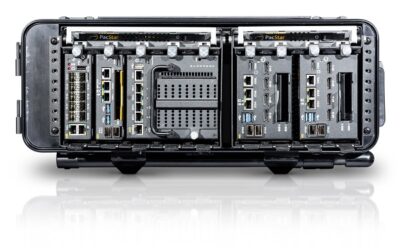Debate Surrounds How Future Battlefield Will Operate
One of the benefits of the format and structure of the IAV annual conference is the way in which it encourages freeform debate – a particularly useful characteristic when so many Type A personalities – with so many corporate, institutional, organisational and personal agendas in mind – are gathered in one place. Hence it is always instructive – not to say enjoyable – to remain to the bitter end and listen to (or even participate in) the ‘leadership roundtable’ event that closes the conference proper.
This year was no exception. Reporting restrictions from the conference mean it is not possible at this juncture to report verbatim from the session, but we can enumerate and illuminate some of the themes MONCh will be following in direct contact with the appropriate principals in coming weeks and months. There are several worthy issues that were raised and wrestled with in the scant half hour of the final plenary session. Among them:
Is the tank dead? Yes and no, was the answer. Certainly, we have reached the physical limitations of the 70+t main battle tank. The current generation of US tank transporters and flatbeds, for example, can no longer transport adequate numbers of ABRAMS. The Franco-German Main Ground Combat System (MGCS), destined to replace LEOPARDs and LECLERCs around 2030-2035, is likely to be in the 50t class (or even lower) rather than 60-70. The same applies to the range of vehicles that will constitute the US Next Generation Combat Vehicle (NGCV) programme, which seeks to replace ABRAMS and BRADLEY, among others. In both cases a family of vehicles is likely, and a direct one-for-one replacement for existing MBTs unlikely. But there will continue to be a requirement for a survivable, protected, powerful platform – manned or unmanned – with the ability to operate agilely at a very high operational tempo. Which describes – a tank? Armchair generals have been predicting the death of the MBT for four decades or more – ever since the advent of guided weapons. The generals who actually wear uniforms, however, are much more sanguine: why do away with something that still has multiple uses and increases rather than limits the range of options available to commanders. The tank has a long and potentially valuable history yet to come before it eventually succumbs to the inexorable march of technology;
What effect might crew reductions have on the efficacy of armoured vehicles? This caused some quite heated discussions after the conference. The obvious issue is – if a crew is reduced to three (or even two) in a major combat vehicle – for which it is now not unusual for a mission to be up to 72 hours in duration – how does crew fatigue affect the vehicle’s combat contribution? One point of view has it that technology can compensate for the human being and provide overwatch (but not, perhaps, overmatch) even if all the crew are asleep. The opposing point of view is that we do not yet have sufficiently advanced artificial intelligence to be able to make the required qualitative decisions the human being finds almost instinctive – therefore the crew numbers should be maintained as high as possible, even with autoloaders and other crew task reduction devices. Work done by the UK Defence Science and Technology Laboratory some years ago revealed the human factors advantages of a three man versus a two man crew far outweighed the putative logistical and operational advantages;
What prevents the emergence of swarming robots? Beloved of Hollywood and already a reality in the air and, to a degree, at sea, why do we not talk more of the potential challenge posed by hordes of cheap but relatively powerful weaponised robots on the battlefield? Because the ground is an infinitely more complex environment, the panellists all agreed (humans can easily tell the difference between a tree and a shadow but how do you teach a machine to discriminate?) The debate focused for a moment on the issue of remote-controlled vehicles versus fully autonomous robots: there seemed to be at least partial consensus that we might see further exploitation of the former in the relatively near future, but that we are “a very long way indeed” from seeing vast numbers of low-cost system wresting control of the battlefield from the human being;
How can we do things differently? Obviously, there are as many answers to that question as there are people prepared to answer it, plus an abundance of additional answers depending on how many consultants, advisors and special projects managers are invited to participate. A strong argument could, in fact, be made that virtually every presentation made during the conference – and many of the supporting exhibits – were about how to do things differently. The question, then, becomes not so much one of how to DO it differently but rather one of how to get to the position from which we CAN. And that requires education, persuasion (blackmail?) to convince the authorities and regulators that we NEED to do things differently. As one very senior officer had opined somewhat wistfully in his very forthright presentation, “There are a lot of stakeholders who can say no – and very few who are able to say yes!” we are getting there – that much is certain and is a result, in part, of conferences and colloquia such as IAV. But it is slow. Brother, is it slow….

























